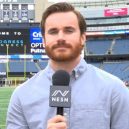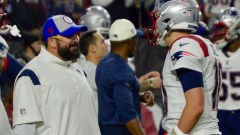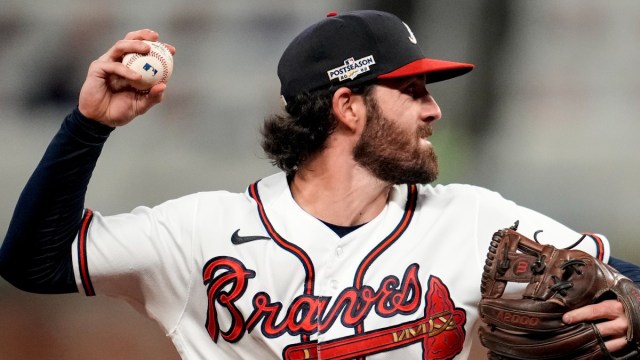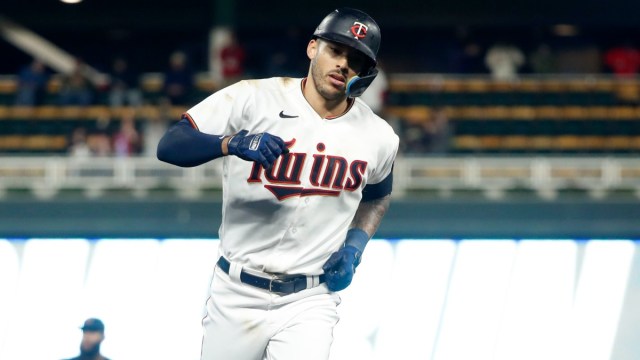Vance Joseph’s headline-grabbing assessment of the New England Patriots’ offense was viewed as a dig at play-caller Matt Patricia.
But the “very conservative” approach he described was exactly what Patricia and the Patriots employed in Monday night’s 27-13 win over Joseph’s Arizona Cardinals at State Farm Stadium.
Four days after Arizona’s defensive coordinator said New England’s offense featured “a ton of screens” and looked “like a defensive guy” was calling plays, Patricia dialed up … a ton of screens. The Patriots ran a total of 12 screen passes against the Cardinals, per Pro Football Focus, plus another that was wiped out by an illegal block in the back penalty.
That was the highest single-game total of quarterback Mac Jones’ young NFL career, and it continued a radical recent shift in offensive philosophy for the Patriots.
Why so many? Was it because the Patriots were down a starting offensive tackle (Isaiah Wynn) and have struggled to protect Jones of late? Was it because their top two receivers (Jakobi Meyers and DeVante Parker) both were in concussion protocol by the end of the first quarter? Was it a game-plan decision to exploit the aggressiveness of Joseph’s blitz-happy defense?
“It’s probably a combination of all of that,” Patricia explained Tuesday in a video conference. “It just kind of depends on what you characterize as a screen pass. Are they the ones where the offensive line is getting out and there’s full blocking? Is it to the backs? Is it to the tight ends? Is it to the wide receivers? What’s the situation that those plays are coming up?
“We have some good guys that can do good things when they get the ball in their hands certainly out in space, so if we have that opportunity, we’re going to try to take advantage of it. I think you saw that last week with Marcus (Jones’ screen-pass touchdown against Buffalo) in that situation. So a lot of that stuff is just in-game, whether that’s adjustments or looks or different calls that we actually have called at that point, but just trying to take advantage of what we can get.”
This plan yielded less-than-stellar results Monday night.
Jones completed 11 of his 12 screen passes for 58 yards, per PFF, an average of just 4.8 yards per attempt. Only two resulted in first downs: a running back screen to rookie Pierre Strong off two play-action fakes that gained 16 yards, and a quick screen to rookie wideout Tyquan Thornton that picked up 3 yards on third-and-2. Another to Kendrick Bourne went for an 8-yard gain, and one to Rhamondre Stevenson might have gone for big yardage had David Andrews not whiffed on an open-field block against linebacker Zaven Collins.
But most were snuffed out for short gains. On the one that was negated by a Mike Onwenu penalty, Marcus Jones was buried in the backfield after an odd throwback screen that had Mac Jones rolling to his right and then throwing back toward the left sideline. On non-screen passes against Arizona, Jones averaged 7.7 yards per attempt, including a pair of 30-plus-yard strikes down the seam to tight end Hunter Henry.
Patricia and the Patriots have faced criticism and mockery for their overreliance on the quick-passing/screen game, but this has been a new development for New England. In the six games since Jones returned to full participation following his high ankle sprain, he’s attempted nine, nine, seven, six, seven and 12 screen passes. He has the highest rate of screen-pass usage of any starting QB during that span (21.9%).
That’s a 180-degree turnaround from the Jones we saw earlier this season.
In his three games pre-injury, the second-year pro attempted seven total screen passes. Those plays represented just 6.3% of his total dropbacks. Back then, the primary criticism of the Patriots’ offense was that they were taking too many risky, tight-window deep shots and not playing to Jones’ strengths as a responsible signal-caller. They were attacking downfield too much, not too little.
Jones was between those two extremes as a rookie, with then-coordinator Josh McDaniels calling screens on 10.2% of his dropbacks last season. That moderate clip ranked 19th among 39 NFL QBs with at least 150 dropbacks.
Why such a dramatic change? That’s unclear. But the Patriots’ offensive line issues likely are a significant contributing factor.
The Patriots kept the same starting O-line intact for the first six weeks of the season. And while that unit was far from dominant, O-line play was not a crippling, persistent problem for New England in September and October. Jones and his backups, Brian Hoyer and Bailey Zappe, took a total of 12 sacks over the Patriots’ first seven games, tied for seventh-fewest in the NFL.
But injuries to Andrews, Wynn, Trent Brown, Marcus Cannon and Yodny Cajuste have forced the Patriots to shuffle their line on a near-weekly basis of late. They’ve fielded six different starting fives over their last eight games. Their starting right tackle for the last two, Conor McDermott, was a member of the New York Jets’ practice squad less than a month ago.
In Jones’ first four full games back from injury, he was sacked six, four, six and three times. The depletion of New England’s poorly constructed O-line — the Patriots didn’t do nearly enough to bolster their tackle depth, in particular, during the offseason — has coincided with a move toward a much, much more conservative offensive approach.
The Patriots’ goal seems to be to limit turnovers and other back-breaking mistakes on offense and hope they can win with strong defense and opportunistic special teams. And against some teams, that’s been a viable strategy. Jones threw just two interceptions over the last six games, and both came when he was hit while throwing. The Patriots won four of those games to reclaim the final AFC playoff spot, putting them in control of their own destiny with four weeks remaining.
But the Patriots have yet to prove they can beat even an above-average opponent — save for the Zach Wilson-led New York Jets — with their current offensive operation. With games against the Cincinnati Bengals, Miami Dolphins and Bills still left on their schedule, they’ll need to if they hope to secure that postseason berth.
New England will visit McDaniels’ new team, the Las Vegas Raiders, this Sunday.







